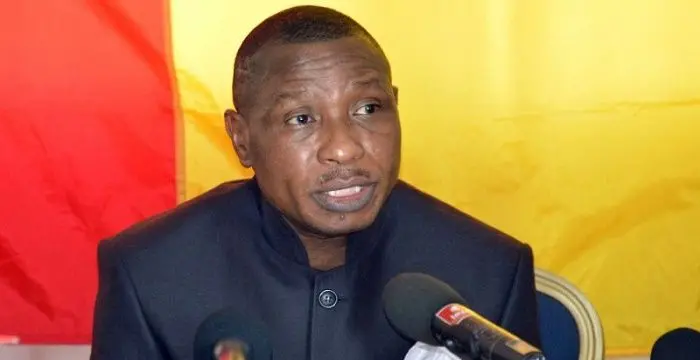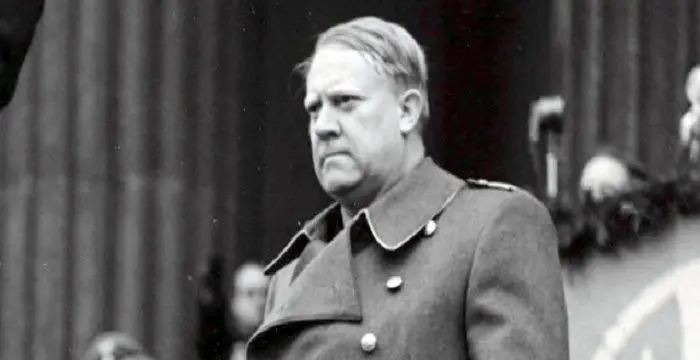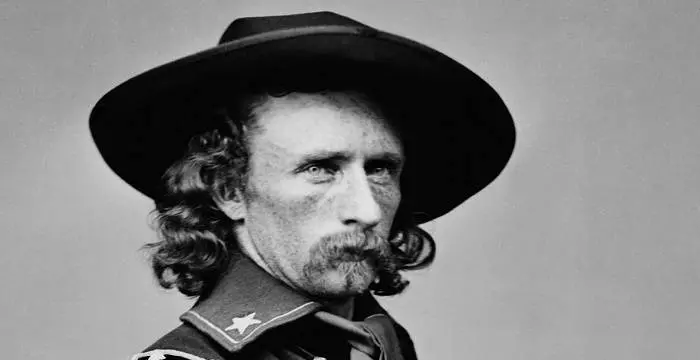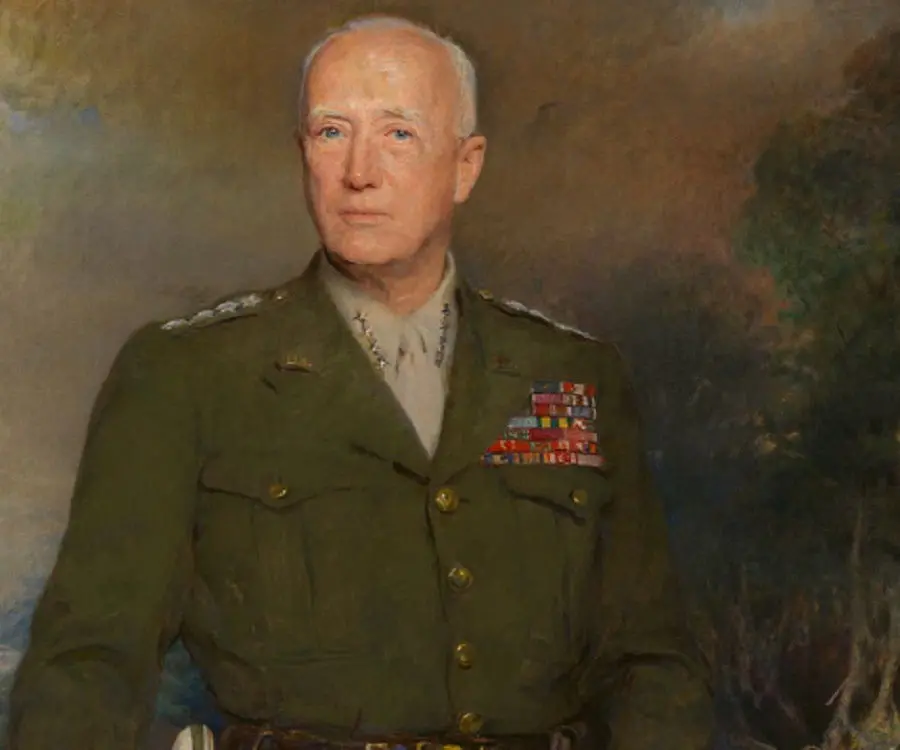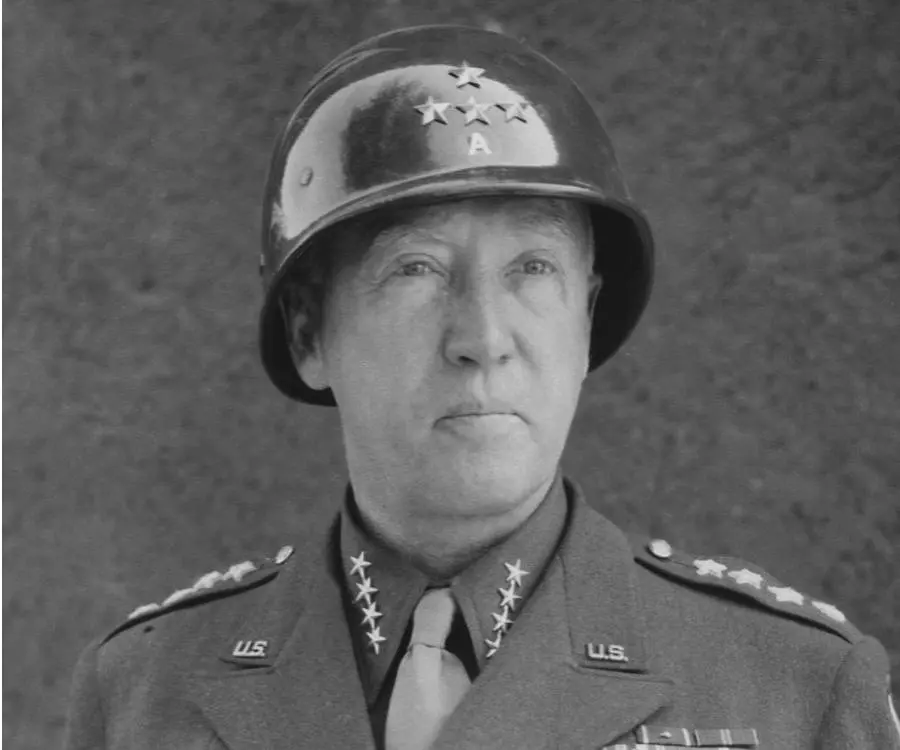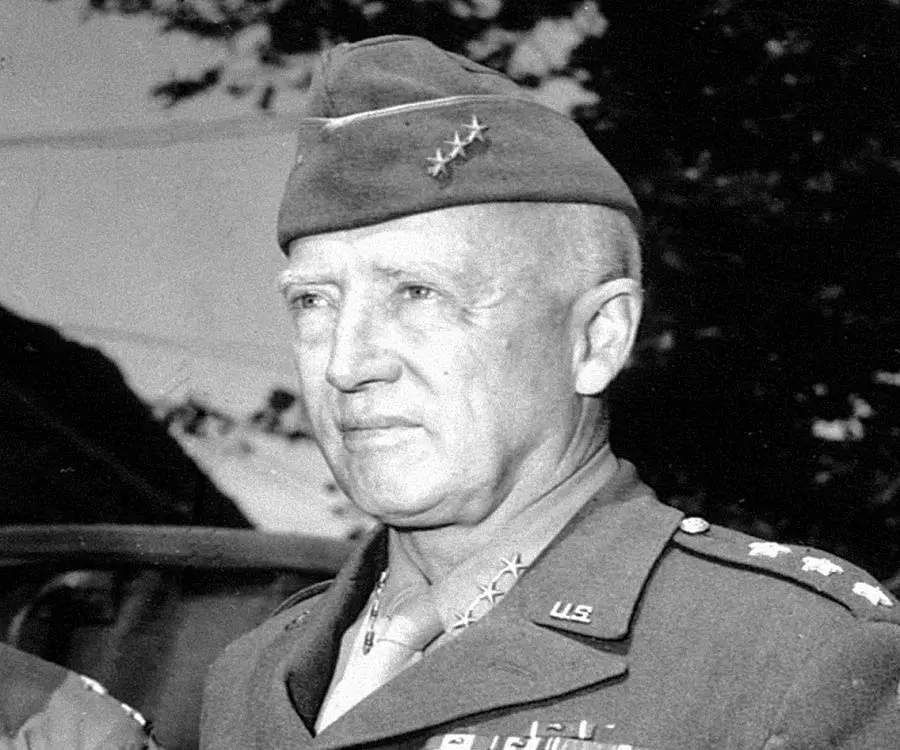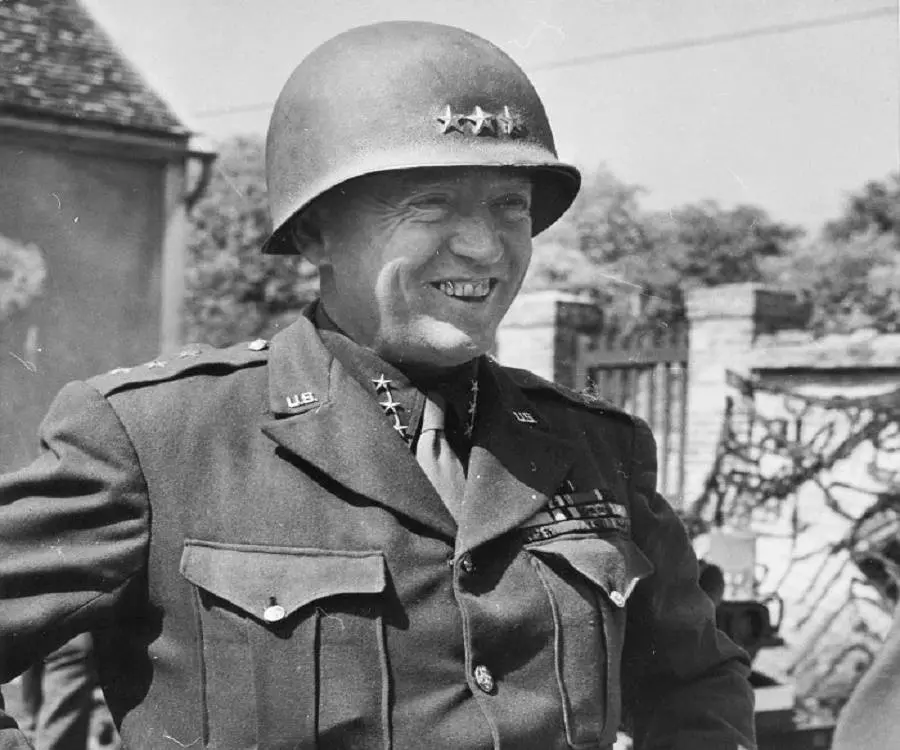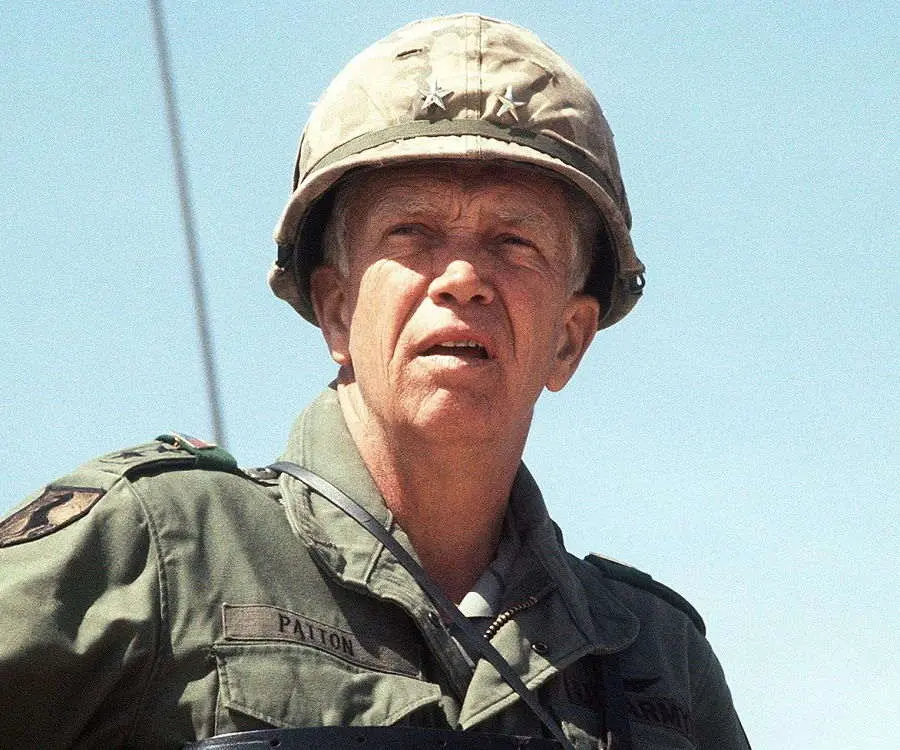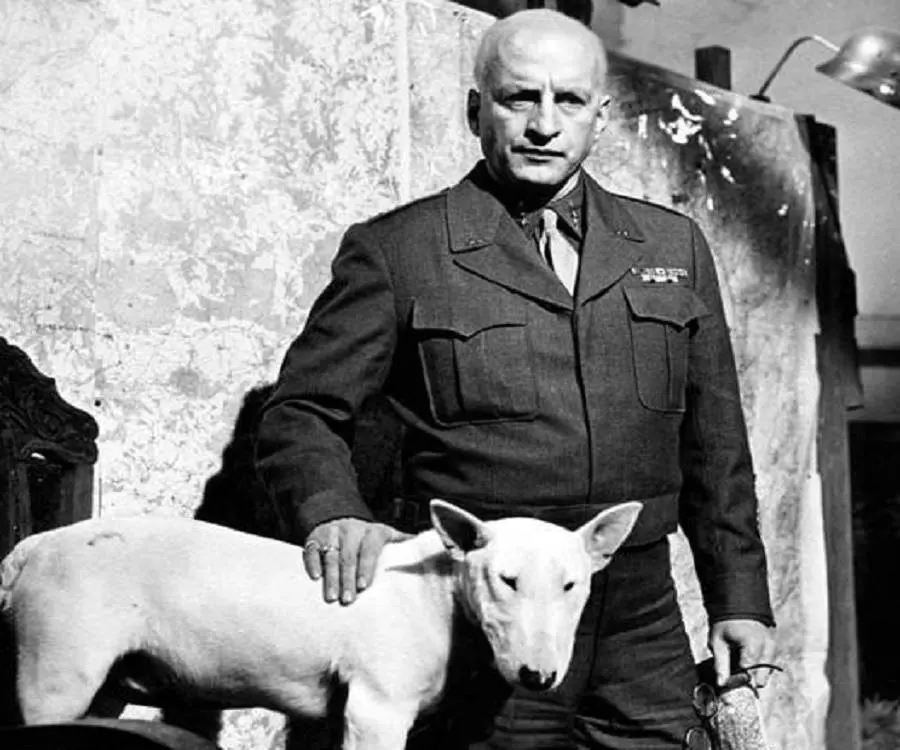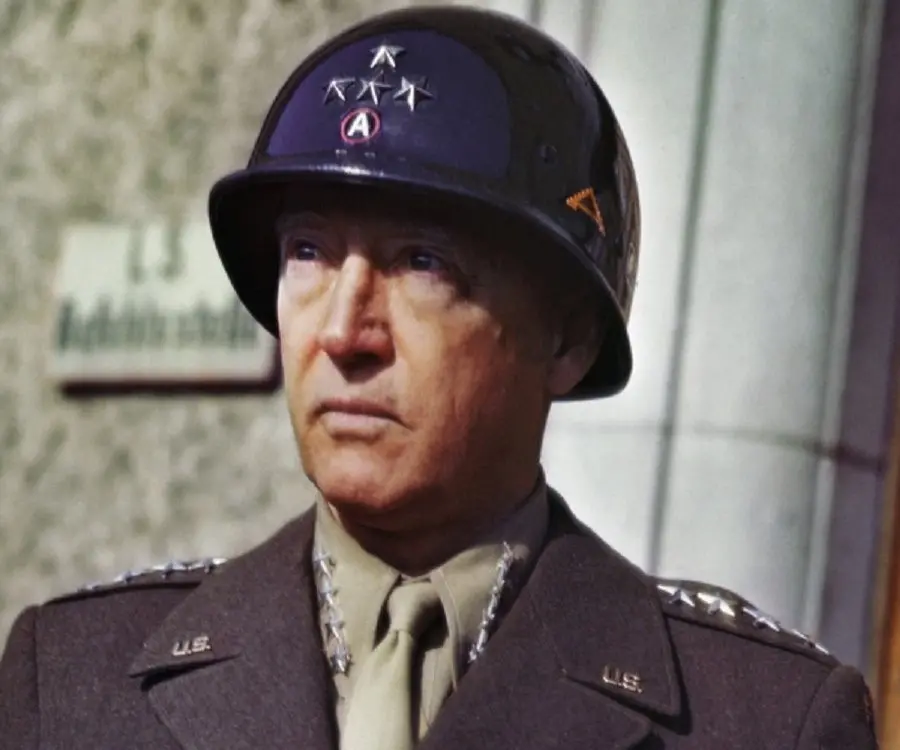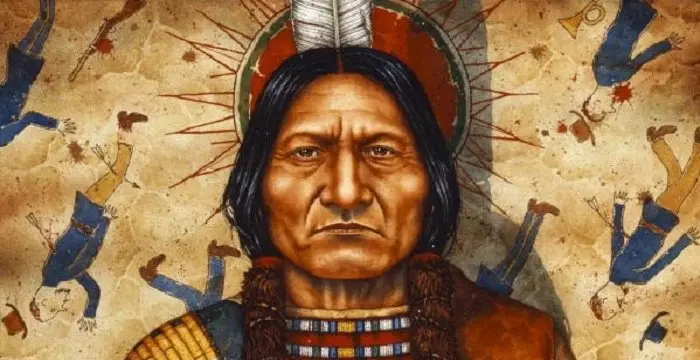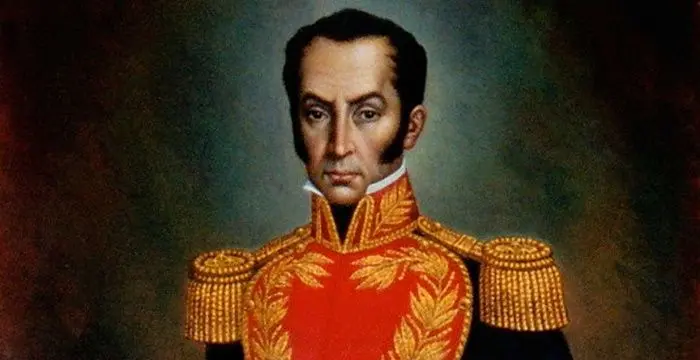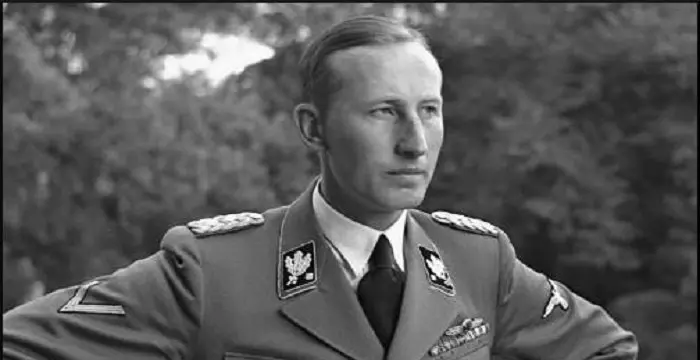
George Patton - Military Officer, Family and Family
George Patton's Personal Details
General George Patton was a famous US military commander who was best known for his bold and decisive actions during World War I and World War II.
| Information | Detail |
|---|---|
| Birthday | November 11, 1885 |
| Died on | December 21, 1945 |
| Nationality | German, American |
| Famous | Leaders, Military Leaders, Military Officer |
| City/State | California |
| Nick names | Old Blood and Guts |
| Spouses | Beatrice Banning Ayer (m. 1910–1945) |
| Known as | General George Smith Patton Jr., George Smith Patton Jr. |
| Childrens | Beatrice Smith, George Patton IV, Ruth Ellen |
| Birth Place | San Gabriel, California |
| Born Country | United States |
| Height | 187 |
| Gender | Male |
| Father | George S. Patton |
| Mother | Ruth Wilson |
| Sun Sign | Scorpio |
| Born in | San Gabriel, California |
| Famous as | Military Officer |
| Died at Age | 60 |
// Famous Military Officer
Moussa Dadis Camara
Moussa Dadis Camara is a former President of Guinea and also a career military man. To know more about his childhood, career, profile and timeline read on.
Vidkun Quisling
Vidkun Quisling was a Norwegian army official and a politician, who supported Hitler during Nazi invasion of Norway. This biography profiles his childhood, personal life, family, career, etc.
George Armstrong Custer
George Armstrong Custer was a ‘US Army’ officer who fought during the American Civil War and the American Indian Wars.
George Patton's photo
Who is George Patton?
General George Patton was a famous US military commander who was best known for his bold and decisive actions during World War I and World War II. He belonged to an affluent family with a military background and was an avid reader of military history. He also had a flair for horse riding and sword fencing. During World War I, he commanded the ‘US 1st Provisional Tank Brigade’ against the Germans in the Battle of Saint-Mihiel and the Meuse–Argonne Offensive. He was wounded during an attack near the town of Cheppy but continued to command his troops till he was evacuated. When World War II broke out, he commanded the ‘Western Task Force’ that landed in Casablanca and defeated the Vichy French forces. Under his dynamic leadership, the German and the Italian forces under Rommel were pushed back in the Battle of El Guettar and in Gabès. He was made the commander of ‘Operation Husky,’ or the invasion of Sicily. Later, he commanded the ‘US Third Army’ that routed the Germans in the Battle of the Bulge and crossed the Rhine to maintain their momentum against the Germans till the end of the war in Europe.
// Famous Military Leaders
Sitting Bull
Sitting Bull was a Teton Dakota Indian chief who led Sioux tribes in their struggle for survival on the North American Great Plains.
Simon Bolivar
Simón Bolívar was a Venezuelan military leader who was instrumental in independence of several Latin American countries from the Spanish rule. This biography profiles his childhood, life, achievements and timeline.
Reinhard Heydrich
Reinhard Heydrich was a high-ranking German Nazi official during the World War II. Check out this biography to know about his childhood, family life, achievements and other facts about his life.
Childhood & Early Life
George Smith Patton Jr. was born on November 11, 1885, in San Gabriel, California, US, to George Smith Patton Sr. and Ruth Wilson. He had a younger sister named Anne. His family was of Irish, Scottish, Welsh, and English descent, with a military background dating back to the ‘Confederate States Army.’ His father graduated from the ‘Virginia Military Institute’ and became a lawyer who rose to be the district attorney of Los Angeles County.
Patton was initially a slow learner but later got over his shortcomings to become an avid reader. He was home-tutored till the age of 11, after which he joined ‘Stephen Clark’s School for Boys’ and excelled in his studies.
He developed a passion for military history during his youth and also picked up horse riding. His mind was set on joining the army. Soon, he joined the ‘Virginia Military Institute,’ from where he was selected for the ‘US Military Academy’ at West Point in 1904.
His academic performance at West Point was below average, due to which he had to repeat his first year. However, he excelled in military subjects and became an ace sword fencer. He was the cadet adjutant in his senior year and got commissioned as a second lieutenant in the cavalry branch.
Career
On his first assignment with the ‘15th Cavalry’ at ‘Fort Sheridan’ in Illinois, he established himself as a dedicated and dashing junior leader. In 1911, he moved to ‘Fort Myer’ in Virginia, where he served as an aide to Secretary of War Henry L Stimson.
He served a short tenure at the office of the ‘Army Chief of Staff’ (CSA) in 1913 and later joined the ‘Mounted Service School’ at ‘Fort Riley,’ where he was a student and a fencing instructor. He was the first army officer to be designated with the title “Master of the Sword” for his swordsmanship.
During the Pancho Villa Expedition launched in Mexico in 1916, Patton was initially an aide to John J Pershing. Patton imbibed Pershing’s qualities of being bold and decisive and of leading from the front. He was assigned a troop of the ‘13th Cavalry,’ with which he successfully killed the infamous Mexican bandit Julio Cárdenas.
When World War I broke out, Patton initially went to Europe as an aide to Pershing. He trained on tanks and was promoted to the rank of captain in May 1917. He became a major in January 1918 and was given the command of the first ten tanks at the ‘Tank School’ in Bourg, where he was instrumental in improving the tactics of the infantry operating with tanks.
He became a lieutenant colonel in April 1918 and attended the ‘Command and General Staff College’ in Langres. After the course, he was put in charge of the ‘US 1st Provisional Tank Brigade,’ which he led from the front against the Germans in the Battle of Saint-Mihiel and the Meuse–Argonne Offensive. He was wounded during an attack near the town of Cheppy but continued to command his troops for an hour before being evacuated.
In October 1918, he was promoted to the rank of colonel and returned to the front. However, the hostilities ended in November that year. Patton was assigned to Camp Meade, Maryland, in March 1919. He reverted to the rank of captain on June 30, 1920, but was promoted to the rank of major the following day.
During the period between the two World Wars, he served in various command and staff appointments, where he wrote manuals on tank warfare and design. He believed that tanks should not be used as a support to the infantry but should be used as independent arms in mechanised warfare. By December 1940, he rose to the helm of the prestigious ‘1 Armored Corps’ and conducted large-scale exercises to prove his point.
During the North African Campaign of World War II, Patton commanded the ‘Western Task Force’ that landed in Casablanca and defeated the Vichy French forces in November 1942. In March 1943, after the defeat of the US forces by the ‘German Afrika Korps’ under Rommel, Patton took over command of the ‘US II Corps’ and was promoted to the rank of lieutenant general. Under his dynamic leadership, the German and the Italian forces were pushed back in the Battle of El Guettar and in Gabès.
Patton was made commander of the ‘Seventh United States Army’ for ‘Operation Husky,’ or the invasion of Sicily. His forces successfully landed at Gela, Scoglitti, and Licata, in support of the ‘British Eighth Army’ led by Bernard Montgomery, in July 1943.
In August 1944, Patton’s ‘Third Army’ attacked Brittany and Seine, trapping thousands of German soldiers in the Falaise Pocket. His operations had his trademark of speed and aggression and took the Germans by surprise. He could have made faster progress, but there was shortage of fuel, as Eisenhower favored a “broad front” style of attack to a narrow penetration that could be cut off.
In December 1944, his ‘Third Army’ disengaged from Saarbrucken in record time and redeployed for the Battle of the Bulge. His forces routed the Germans in Bastogne and drove them back to Germany.
By February 1945, the German army was on the run and Patton’s ‘Third Army’ maintained their momentum by crossing the Rhine. He was ordered to turn his offensive toward Czechoslovakia, anticipating a last stand by the Germans. The war in Europe ended in May that year, after which he served as part of the occupation forces.
His final assignment was to be in charge of the ‘Fifteenth US Army’ in Bad Nauheim. His car met with an accident while on a hunting trip. This left him paralysed from the neck down. He passed away 12 days later, on December 21, 1945.
Awards & Achievements
General Patton received the ‘Distinguished Service Cross’ twice, the ‘Distinguished Service Medal’ thrice, the ‘Silver Star’ twice, the ‘Legion of Merit,’ the ‘Bronze Star,’ and the ‘Purple Heart,’ besides various other campaign medals.
Personal Life & Legacy
He married Beatrice Banning Ayer in May 1910, in Beverly Farms, Massachusetts. They had two daughters named Beatrice Smith and Ruth Ellen and a son named Patton IV.
There was a time between World War I and World War II, when he suffered from depression and took to drinking. It is said that he even had an affair with his niece, which almost ruined his marriage. It is believed that after World War II, he went into a second bout of depression and erratic behavior.
He was fond of polo and sailing. He was once kicked by a horse and developed phlebitis, which almost forced him out of the army.
Trivia
He was selected for the first modern pentathlon at the 1912 ‘Olympic Games,’ where he competed in pistol firing, swimming, fencing, equestrian competition, and footrace. He finished fifth overall.
He formulated a new doctrine for the US cavalry that favored thrusting attacks to standard slashing maneuvers and designed a sword for such attacks.
// Famous Leaders
Edi Rama
Edi Rama is the current Prime Minister of Albania. Check out this biography to know about his childhood, life, achievements, works & timeline.
Tecumseh
Tecumseh was a Native American leader of the Shawnee clan. This biography profiles his childhood, life and timeline.
Khalifa bin Zayed Al Nahyan
Sheikh Khalifa bin Zayed Al Nahyan is the current President of the United Arab Emirates (UAE). Check out this biography to know about his birthday, childhood, family life, achievements and fun facts about him.
George Patton biography timelines
- // 11th Nov 1885George Smith Patton Jr. was born on November 11, 1885, in San Gabriel, California, US, to George Smith Patton Sr. and Ruth Wilson. He had a younger sister named Anne. His family was of Irish, Scottish, Welsh, and English descent, with a military background dating back to the ‘Confederate States Army.’ His father graduated from the ‘Virginia Military Institute’ and became a lawyer who rose to be the district attorney of Los Angeles County.
- // 1904He developed a passion for military history during his youth and also picked up horse riding. His mind was set on joining the army. Soon, he joined the ‘Virginia Military Institute,’ from where he was selected for the ‘US Military Academy’ at West Point in 1904.
- // May 1910He married Beatrice Banning Ayer in May 1910, in Beverly Farms, Massachusetts. They had two daughters named Beatrice Smith and Ruth Ellen and a son named Patton IV.
- // 1911On his first assignment with the ‘15th Cavalry’ at ‘Fort Sheridan’ in Illinois, he established himself as a dedicated and dashing junior leader. In 1911, he moved to ‘Fort Myer’ in Virginia, where he served as an aide to Secretary of War Henry L Stimson.
- // 1912He was selected for the first modern pentathlon at the 1912 ‘Olympic Games,’ where he competed in pistol firing, swimming, fencing, equestrian competition, and footrace. He finished fifth overall.
- // 1913He served a short tenure at the office of the ‘Army Chief of Staff’ (CSA) in 1913 and later joined the ‘Mounted Service School’ at ‘Fort Riley,’ where he was a student and a fencing instructor. He was the first army officer to be designated with the title “Master of the Sword” for his swordsmanship.
- // 1916During the Pancho Villa Expedition launched in Mexico in 1916, Patton was initially an aide to John J Pershing. Patton imbibed Pershing’s qualities of being bold and decisive and of leading from the front. He was assigned a troop of the ‘13th Cavalry,’ with which he successfully killed the infamous Mexican bandit Julio Cárdenas.
- // May 1917 To Jan 1918When World War I broke out, Patton initially went to Europe as an aide to Pershing. He trained on tanks and was promoted to the rank of captain in May 1917. He became a major in January 1918 and was given the command of the first ten tanks at the ‘Tank School’ in Bourg, where he was instrumental in improving the tactics of the infantry operating with tanks.
- // Apr 1918He became a lieutenant colonel in April 1918 and attended the ‘Command and General Staff College’ in Langres. After the course, he was put in charge of the ‘US 1st Provisional Tank Brigade,’ which he led from the front against the Germans in the Battle of Saint-Mihiel and the Meuse–Argonne Offensive. He was wounded during an attack near the town of Cheppy but continued to command his troops for an hour before being evacuated.
- // Dec 1940During the period between the two World Wars, he served in various command and staff appointments, where he wrote manuals on tank warfare and design. He believed that tanks should not be used as a support to the infantry but should be used as independent arms in mechanised warfare. By December 1940, he rose to the helm of the prestigious ‘1 Armored Corps’ and conducted large-scale exercises to prove his point.
- // Nov 1942 To Mar 1943During the North African Campaign of World War II, Patton commanded the ‘Western Task Force’ that landed in Casablanca and defeated the Vichy French forces in November 1942. In March 1943, after the defeat of the US forces by the ‘German Afrika Korps’ under Rommel, Patton took over command of the ‘US II Corps’ and was promoted to the rank of lieutenant general. Under his dynamic leadership, the German and the Italian forces were pushed back in the Battle of El Guettar and in Gabès.
- // Jul 1943Patton was made commander of the ‘Seventh United States Army’ for ‘Operation Husky,’ or the invasion of Sicily. His forces successfully landed at Gela, Scoglitti, and Licata, in support of the ‘British Eighth Army’ led by Bernard Montgomery, in July 1943.
- // Aug 1944In August 1944, Patton’s ‘Third Army’ attacked Brittany and Seine, trapping thousands of German soldiers in the Falaise Pocket. His operations had his trademark of speed and aggression and took the Germans by surprise. He could have made faster progress, but there was shortage of fuel, as Eisenhower favored a “broad front” style of attack to a narrow penetration that could be cut off.
- // Dec 1944In December 1944, his ‘Third Army’ disengaged from Saarbrucken in record time and redeployed for the Battle of the Bulge. His forces routed the Germans in Bastogne and drove them back to Germany.
- // Feb 1945By February 1945, the German army was on the run and Patton’s ‘Third Army’ maintained their momentum by crossing the Rhine. He was ordered to turn his offensive toward Czechoslovakia, anticipating a last stand by the Germans. The war in Europe ended in May that year, after which he served as part of the occupation forces.
- // 21st Dec 1945His final assignment was to be in charge of the ‘Fifteenth US Army’ in Bad Nauheim. His car met with an accident while on a hunting trip. This left him paralysed from the neck down. He passed away 12 days later, on December 21, 1945.
// Famous American peoples
Wentworth Miller
Wentworth Miller is an American actor and screenwriter who achieved recognition for his role in the TV series ‘Prison Break’.
Jason Simpson
Jason Simpson is the son of former NFL running back, broadcaster and actor O. J. Simpson. Check out this biography to know about his childhood, family, life, and little known facts about him.
Melissa Brim
Melissa Brim is the ex-girlfriend of former professional boxer Floyd Mayweather Jr. Check out this biography to know about her birthday, childhood, family life, achievements and fun facts about her.
Skai Jackson
Skai Jackson is an American child actress with huge fan following. Find more about her family & personal life, relationships, facts and more.
Joyce Meyer
Joyce Meyer is a Christian author and speaker. This biography provides detailed information about her childhood, life, achievements, works & timeline
Zoe LaVerne
Zoe LaVerne is an American musical.ly star. Check out this biography to know more about her family, personal life, including her age, birthday, etc.
George Patton's FAQ
What is George Patton birthday?
George Patton was born at 1885-11-11
When was George Patton died?
George Patton was died at 1945-12-21
Where was George Patton died?
George Patton was died in Heidelberg
Which age was George Patton died?
George Patton was died at age 60
Where is George Patton's birth place?
George Patton was born in San Gabriel, California
What is George Patton nationalities?
George Patton's nationalities is German, American
What is George Patton nick names?
George Patton's nickNames is Old Blood and Guts
Who is George Patton spouses?
George Patton's spouses is Beatrice Banning Ayer (m. 1910–1945)
Who is George Patton childrens?
George Patton's childrens is Beatrice Smith, George Patton IV, Ruth Ellen
How tall is George Patton?
George Patton's height is 187
Who is George Patton's father?
George Patton's father is George S. Patton
Who is George Patton's mother?
George Patton's mother is Ruth Wilson
What is George Patton's sun sign?
George Patton is Scorpio
How famous is George Patton?
George Patton is famouse as Military Officer
